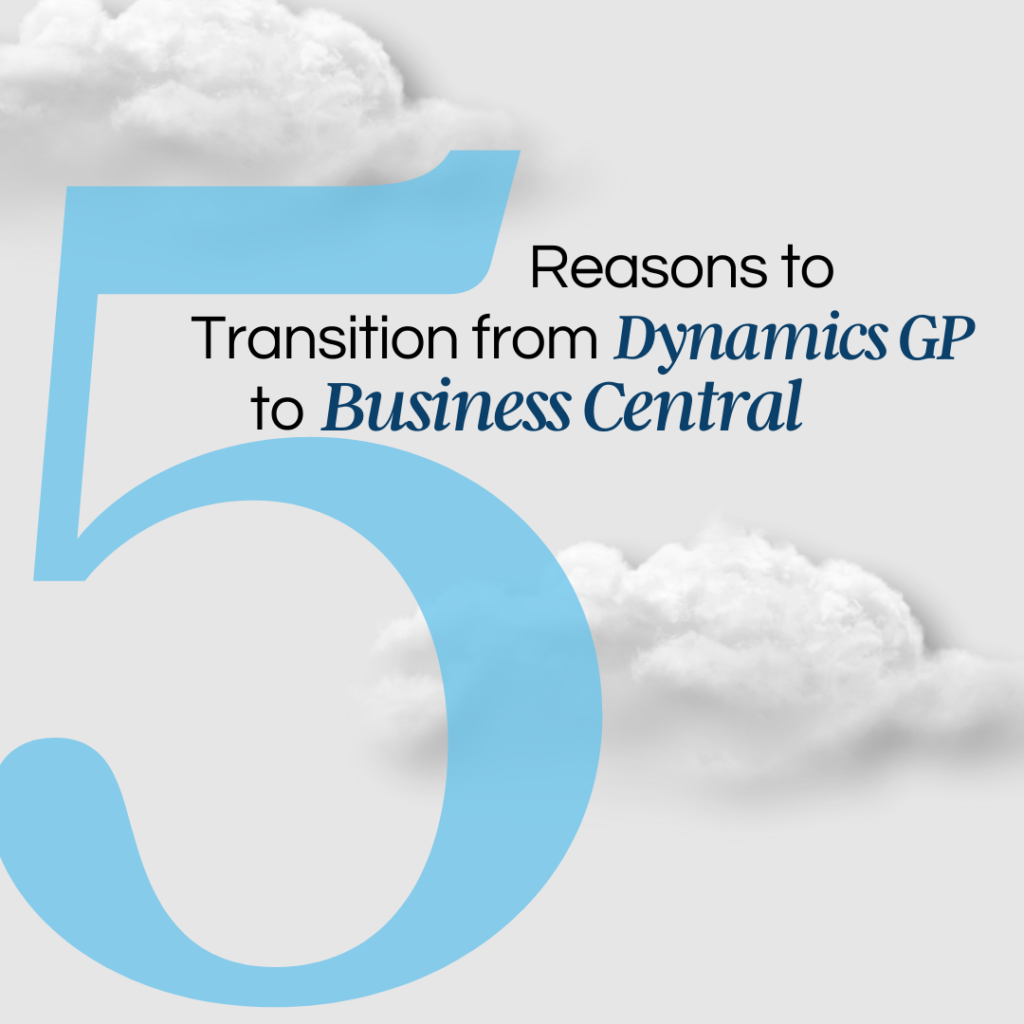Blog
5 Reasons to Transition from Dynamics GP to Business Central in the Cloud

Florida state seminars jerseys 49ers jersey custom made football jerseys asu football jersey custom made football jerseys College Football Jerseys 49ers jersey Iowa State Football Uniforms brock bowers jersey Florida state seminars jerseys asu football jersey College Football Jerseys 49ers jersey custom football jerseys johnny manziel jersey
Why do business transition from Dynamics GP to Business Central (BC) in the cloud? Dynamics GP has been a great on-premises ERP solution for a long time. As a legacy software system that’s often powered by outdated hardware, companies tend to find it difficult to improve application performance, ensure business continuity, and reduce IT costs.
Companies also keep running into three challenges that constrain business operations:
- Strained growth — GP can’t keep up with the volume of transactions. A lot of workarounds must be created to enable processes, and collaboration is difficult.
- Disconnected systems — Billing and CRM, for example, might be handled by different systems, which makes it more difficult for people to work remotely, and it’s challenging to manage projects and supply chains. 54% of GP organizations struggle with process and system integration issues.
- Report limitations — 50% of GP organizations find that creating reports is too complicated, making it difficult to get immediate insights into activities and delaying decision-making.
Growing companies often discover GP simply has its limitations in keeping up with the pace of business. There’s also not enough flexibility to leverage new technologies. As well as, scaling compute resources to meet customer demands usually takes too long.
The Key Benefits of Business Central
As an alternative to Dynamics GP, many companies transition to Dynamics 365 BC. The ERP platform is similar to GP but offers enhanced capabilities by running in a modern cloud environment. BC automatically pulls systems and processes together to enable you to manage financials, sales, service and operations. It also gives you the option to connect to third-party systems for payroll, CRM, banking, and industry-specific needs.
You will find enhancements include project accounting, project management, inventory, warehousing, supply chain management, and service order management. With these capabilities, BC offers five primary benefits in comparison to GP:
- Cloud environment enables anywhere/anytime access (on the road, at home, in the office) from any device (Microsoft, iOS, Android). This is particularly helpful for inquiries and access to dashboards to check on order status and customer info.
- Streamlined business processes with two-way access between BC and any Office app, Outlook, OneDrive, and Teams. When in Teams, for example, users can access and share ERP info. They can also embed Power BI reports into BC and email quotes, invoices, purchase orders, and service updates through the link to Outlook.
- Dimensional foundation allows for multi-level reporting that goes beyond the segmentation of the chart of accounts in GP. You can report at multiple levels in the organization (department, division, business unit) to analyze activity in a particular dimensional area such as GL transactions or by customer, project, or vendor.
- Advance inventory and warehouse capabilities let you build a structure for processes to handle receiving, shelving, picking, and shipping. This Allows the warehouse team to work more efficiently and increase throughput.
- Personalized roles facilitate a more efficient work environment. You can set things up the way your team works. It gives you the ability to modify screens, hide fields/columns or move them around, or add fields. You can also create roles to show screens pertaining to each person’s job responsibilities.
With BC running in the Microsoft Azure cloud, you also benefit from an entire ecosystem of integrated products and technology platforms. This includes easily connecting to other Dynamics 365 solutions to enhance all your customer engagements.
Then there’s the Microsoft Power Platform (Power BI, Power Automate, and Power Apps) to increase your reporting capabilities set up automated workflows with process approval notifications, and create processes for your unique workflow requirements. In addition, the AppSource store allows you to tap into industry-specific solutions that integrate easily with BC. You can test them first in your environment to make sure they are a good fit.
Comparing the TCO of the Cloud vs. On-Premises
When comparing the cost of an ERP solution in the cloud versus on-premises, the implementation, customization, and training costs are likely about equal. But there’s a misconception BC in the cloud costs more because of the ongoing subscription license costs versus the one-time on-premises license cost of GP.
However, on-premises solutions have additional costs to consider as well. This includes hardware, internal IT support, and software maintenance/upgrades. It’s also more costly to set up technologies that will enable remote work.
Another key consideration is the frequency of application enhancement updates. In the cloud, updates occur usually about every quarter, and because the changes are incremental, your team can adopt them easily and there are no interruptions to daily business operations.
With on-premises, major upgrades occur every 2 or 3 years requiring extensive downtime and planning. If a new capability comes out shortly after your initial implementation, it forces businesses to wait a long time before you can take advantage of it.
Keep the Momentum Going Post Migration
A key factor in the success of your transition from Dynamics GP to BC is to make sure your end-users get the training they need during and after the migration to understand the differences in how BC works and what it can do. This will increase user adoption of the solution, which will add to the return on your investment.
It will also be important to conduct an annual system assessment in relation to the current state of your business to see if there are new functions to add or other adjustments. Lloyd Business IT Solutions can consult with you on new technologies you might want to implement as well.
If your company is exploring or needs help planning a migration, contact us today.